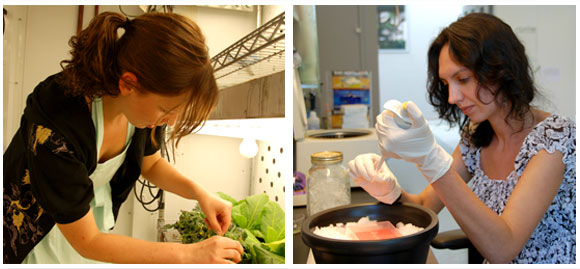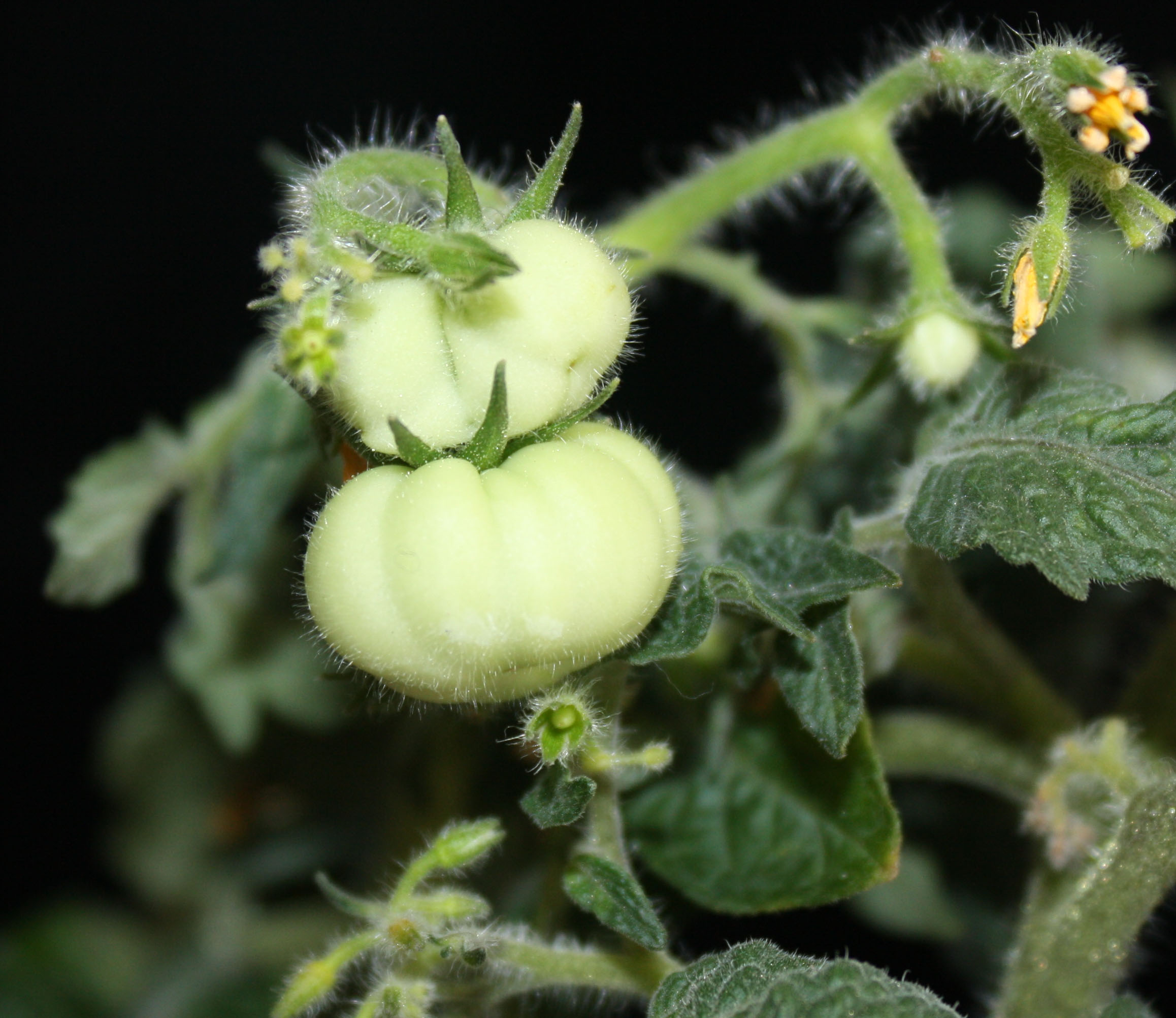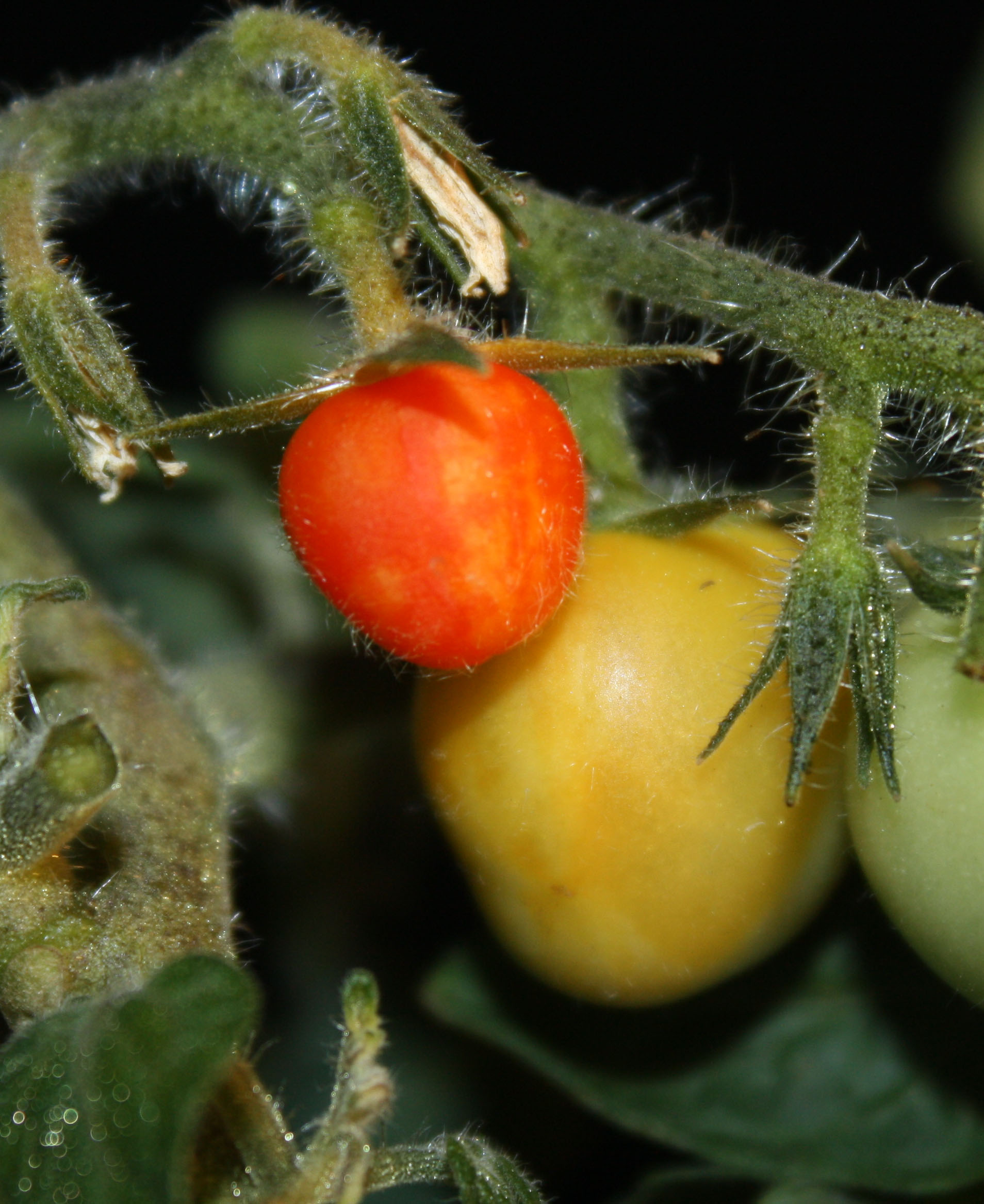Did You Know the Botanical Garden Has a Lab?
Posted in Science on April 19 2011, by Ann Rafalko
| Amy Litt is Director of Plant Genomics and Cullman Curator |
Four of the Garden’s six Science programs, The Lewis B. and Dorothy Cullman Program for Molecular Systematics, the Genomics Program, the Structural Botany Program, and the Graduate Studies Program are housed in the beautiful Pfizer Plant Research Laboratory, which sits at the northwest corner of the Garden overlooking Twin Lakes.

In the Genomics Program, curators, post-docs, graduate students, and technicians, along with undergraduate and high school interns are studying how genes make plants different from each other–for instance why the seeds of some species are enclosed in an edible fleshy fruit like a tomato, whereas the seeds of other species are surrounded by a pod (also called a capsule) that dries and splits open to release the seeds. Graduate students Natalia Pabon-Mora (Judith and Andrew Economos Fellow) and Rachel Meyer and I are studying what makes a tomato fleshy and edible rather than dry and woody by comparing the genes that are active during the formation of tomatoes and closely related capsules.We have identified several interesting-looking genes that act differently during the formation of tomatoes and capsules, and are testing them to see how they contribute to tomato formation.
Rachel and Natalia have tested one of the genes so far, and have found that if it doesn’t function properly, the plant produces tomatoes that are large and lumpy, instead of small (we are working with a cherry variety) and smooth.
Even more interesting, the tomatoes have a very strange uneven blotchy coloration.
We noticed immediately that although these tomatoes are still relatively small, they resemble the large and lumpy shapes we often see in cultivated tomato varieties including oddly colored heirloom varieties. We think we may have found a gene that is responsible for some of the dramatic shapes and sizes of the tomatoes we buy at the grocery store and farmer’s market!




Now this is extremely exciting to me because I can tell when a tomato is a hothouse or otherwise grown by the mealy texture, the quick over ripening in normal room temp and the thick chewy skin. Now this is my tasters results to vine tomatoes, Farmers Markets in season tomatoes and winter Greengrocers. I am happiest in Summer because they come from local farmers and are delicious. I have a pic of splits that look seductive and have wondered why that happened. Seems like this work is much deeper, yet I love the thought that important work is being done that may lead to wonderful consistent tomatoes, even if season may turn out to be Winter! Looking forward to seeing the Lab. Thanks